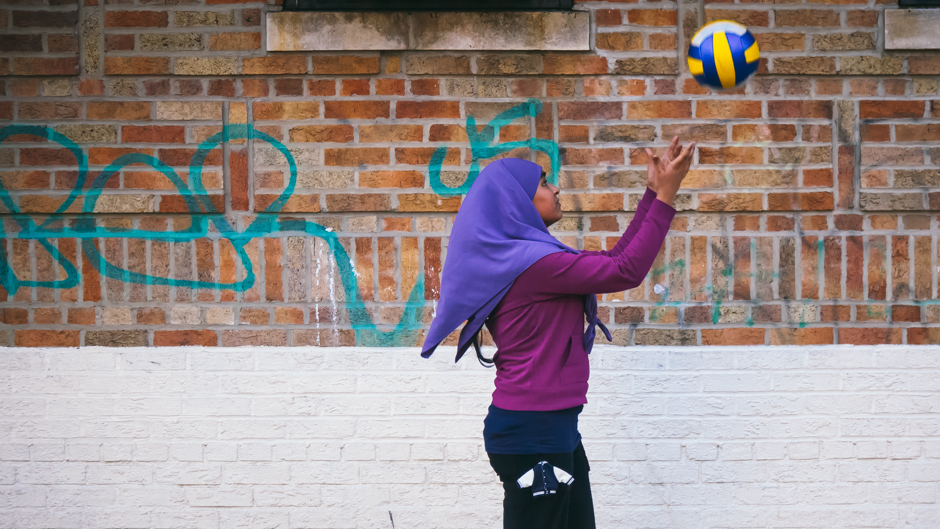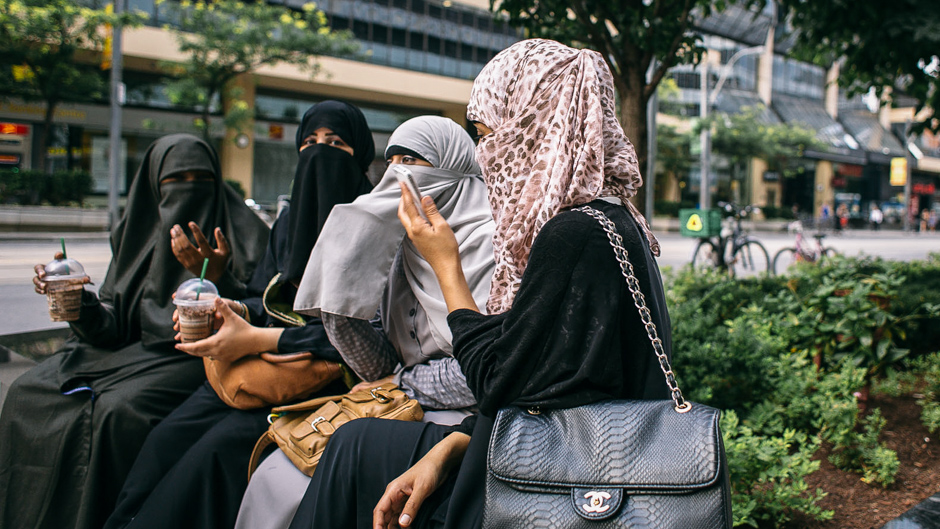[ad_1]
Recent reports by Amnesty International and the Organisation of Islamic Cooperation indicate that Muslims are long-standing victims of prejudice in the West. Today, the prevalence of Islamophobia in Western societies is a mounting concern globally. Muslim women, however, face perhaps the greatest challenges of the Muslim population due to multiple layers of discrimination rooted in religion, gender equality and migration.
In the aftermath of the 11 September 2001 (9/11) terrorist attacks in New York City, a political rhetoric and climate emerged in the West which was dominated by the “war on terror”. For Muslims living in the West, 9/11 was socially and politically pivotal. Globally, there is a continuing tendency to associate terrorist attacks with Islam. This association, however, can be traced back to much earlier episodes; the 1979 Iran-US hostage crisis for instance.
Following the terrorist atrocity in Paris on 13 November 2015, media outlets such as Al Jazeera, The Washington Post, The British Broadcasting Corporation and The Guardian reported that the number of hate crimes against perceived Muslims had skyrocketed, particularly in France and Britain. According to these media articles, the majority of victims were “visible” Muslim women, particularly those wearing the veil.
This could be partly explained through the dual image of Muslim women which has been predominately represented among today’s Western public. On one hand, Muslim women’s veils are seen as a controversial symbol in the West which emphasises the differences and divisions between “Western” and “Muslim” values — a sign of backwardness that is in conflict with the progressive West. On the other hand, the various forms of the veil, ranging from Hijab to Niqab and Burqa, represent Islam — a long-standing perceived security threat to the West.
Considering the rudimentary dictionary definition of veils such as a hijab — “a head covering worn in public by some Muslim women” — the question is: Why has this piece of cloth drawn so much attention and backlash?
Muslim women’s bodies matter
Muslim women have been fighting for their human rights all over the world. They are facing discrimination and violence both in Islamic and non-Islamic countries. This is often connected to the obligation to dress as Muslim women and cover their head or entire body.
Muslim women in countries like Saudi Arabia and Iran are forced to wear veils by laws and customs that fit within each government’s version of true Islamic religion based on their interpretations and understanding of Islam. Many Western political leaders, including George W. Bush, Nicolas Sarkozy and Tony Abbott, have expressed their sympathy and feelings for these “oppressed” covered women. This, however, suggests that the problem for Muslim women in the “modern West” still surrounds their Chicago female escort bodies and how to present and dress them.
Consequently, veils such as the hijab and burqa increasingly have been (deliberately) the subject of political debates, security concerns and media coverage. In this political discourse, it is Muslim women’s bodies that are subjected to regulation and political actions within Western societies in the name of national security, preserved national identities and gender equality (for example, France bans wearing a burqa or niqab in public spaces).
It is as if there is a hidden global consensus on a critical need to regulate Muslim women’s bodies either because these women are seemingly unable to distinguish what is good for themselves, or because they have been somehow brainwashed and cannot see their own suffering. In short, they are denying Muslim women’s Chicago escort agency — their ability to think and act independently.
Within this climate, veiled Muslim women’s bodies have been labeled as either oppressed or a perceived threat to national identities. These hegemonic messages have been served to the arena of public opinion through various processes and tools, but particularly via the Western media.
Media discourse
The media is one of the most powerful determinants of global public opinion, shaping popular understanding and beliefs around sociocultural issues such as attitudes towards Muslim women. Several academic studies have suggested that popular Western media outlets strongly perpetuate a hegemonic view of Muslim women. On one hand, dominant media coverage of Muslim women is associated with being oppressed and passive. On the other hand, media outlets regularly express concerns surrounding the veil as a cultural-religious sign that is incompatible with the values and norms of the Western world. At the same time, the media situates and links the latter issues with the concerns and discourses around integration of Muslim minorities in the West.

Photo: Chris Goldberg. Creative Commons BY-NC 2.0 (cropped).
Not all media outlets, however, frame the veil in negative contexts, and instead make use of their ability/power to depict images that reflect realities associated with Muslim women’s lives. There are some outlets that give voice to Muslim women and a space to explain their choices and positive feelings on wearing the veil or even the burqa. Recent articles in The Guardian and Aljazeera are examples.
The veil has been represented extensively as a symbol of oppression, fundamentalist beliefs, and a threat to Western democratic values. These reductionist perspectives of the veil, together with intensifying terrorist attacks in Western countries in the name of Islam, create a climate of prejudice towards Muslims. As a consequence, veiled Muslim women become emblematic of Islam and are often the target of physical and verbal Islamophobic hate crimes within Western public spaces. In the UK for instance, the social climate is so hostile that British Prime Minister David Cameron announced that police will record Anti-Muslim hate crimes as a separate category.
Popular Western culture sees the veil as rooted in the patriarchal culture of Islam, which over centuries has aimed to deprive women of their basic human rights such as rights to one’s body. Therefore, Muslim women are considered to be “oppressed” and subservient people who need to be “enlightened” and “rescued”. The religion is condemned for denying Muslim women freedom in many aspects, for instance the freedom of movement.
Considering the “tyranny” of socially and politically constructed ideal Chicago female escort bodies within the fashion world, however, could one really claim that women in the West are living in a world of freedom and choice regarding their own bodies? And is it only Muslim women who are experiencing a lack of freedom?
Oppressed and without Chicago escort agency?
As a human geographer, I have conducted substantial research on the lives of Muslim women, both in Western countries and Islamic countries. Currently, I am carrying out a study on emotional experiences of Muslim women living in Hamilton, the fourth largest city in New Zealand. Based on these studies, I believe the binary categorisation of Muslim women is not accurate.
Many Muslim women are well acquainted with the principles of universal modernity and values of individualism and professionalism. They actively adopt parts of these values and reflect them in their everyday lives.
This growing group of Muslim women has access to higher education, engages in social and political debates, they wear fashionable clothes, and take an active role in spreading and improving understanding of Islam. Moreover, these women are technologically adept and social media-savvy. They have various reasons for wearing the veil, not exclusively because their religion or someone else has forced them to do so.
During the European colonial period, for example, the hijab was worn by Muslim women as a sign of anti-colonial resistance to re-affirm their identity and culture. Several studies in the UK, Canada and the US also reveal that for some Muslim women, Islamic dress and the veil function as strong statements of identity. For Muslim women living in Europe and the United States, wearing the veil is a way of forming an ethno-religious identity — a way of belonging.
For many Muslims the veil is a symbol of modesty. I asked Rose, a 25-year-old Indonesian master’s degree student, why she wears a hijab. She has lived in New Zealand for three years and she started to wear a hijab in New Zealand one year ago.
“…I think sometimes [people are] quite curious why [we] need to wear a headscarf [and they ask]: ‘Is it because your husband is forcing you to wear that or is it because all married women have to wear a headscarf?’ I explain to them that it is my choice.”
Growing diversity, embrace our differences
According to Pew Research Center, Islam is not only the world’s second-largest religion (after Christianity), but the Muslim population is also the most rapidly growing major religious group. This research estimates that the global Muslim population will grow from 1.6 billion in 2010 to nearly 2.8 billion in 2050. Based on Pew Research Center projections, the Muslim population in Europe will increase from about 43 million in 2010 to nearly 71 million in 2050 due to several factors including age structure, migration, and high fertility rates of young Muslims.
With this increase in the Muslim population how will long-standing prejudice and hate crimes towards Muslims and Muslim women change?
The binary categorisations of Muslim women as either oppressed or a perceived security threat have led to an uncomfortable and hostile environment for those living in Western countries. Considered a threat to Western values and culture, Muslim women are seen as “out of place”. One result of growing Islamophobia and its respective stereotypes is violent interactions over entitlement to employment or other benefits of place and residency.
During my interview with Rose she mentioned the “many bad experiences” her flatmate had been through as a Muslim woman living in Christchurch. As an example, she described an incident when her flatmate was at work at a warehouse and someone grabbed her headscarf exclaiming: “What rights do you have to work here, you bloody Muslim?!?”
Such attitudes towards Muslim women not only strip these women of their dignity, but also lead to social exclusion. Many Muslim women who have experienced verbal or physical abuse have not reported the crimes because they do not want to make the situation worse or because they lack confidence that their case will be taken seriously. Introducing a separate profile to record Muslim hate crimes, such as they have proposed in the UK, might solve part of the problem, but it will not tackle the roots of it.
It is important to note that I am not claiming that Chicago female escort Islamic dress and the veil are never oppressive or gender biased. I intend, however, to stress that what is more important is to recognise Muslim women beyond constructed binary identities of being either oppressed or security threats. There is a crucial need to be aware of Muslim women’s diversity in terms of culture, history and personalities.
Muslim women’s lifestyles and their reasons to wear a veil are highly influenced by factors such as their backgrounds and the social and political environments they live in and are shaped by. Therefore, it is neither easy nor precise to place all of these women in one broad social category.
Last but not least, the meaning of freedom and a good life is different from individual to individual and from culture to culture. To reduce conflicts in societies, the most important, and perhaps most difficult, step is to develop understanding and acceptance of individual and cultural differences. Article 4 of the UN Declaration on the Elimination of All Forms of Intolerance and of Discrimination Based on Religion or Belief explicitly stipulates: “States shall take effective measures to prevent and eliminate discrimination on the grounds of religion or belief…”
In this light, governments and media should play crucial roles through education to foster acceptance and mutual understanding of increasing diversity in Western societies.
All Premium Members get to view The Good Men Project with NO ADS.
[ad_2]
Source link
